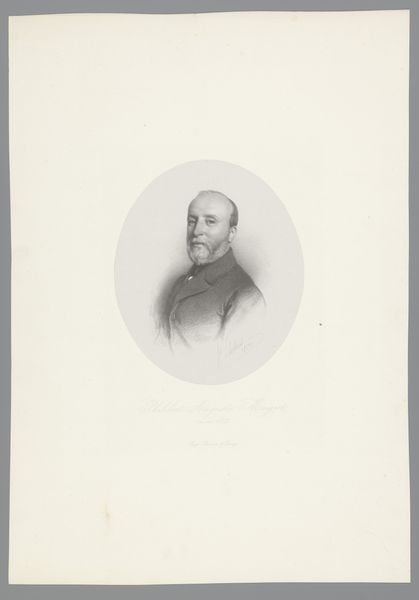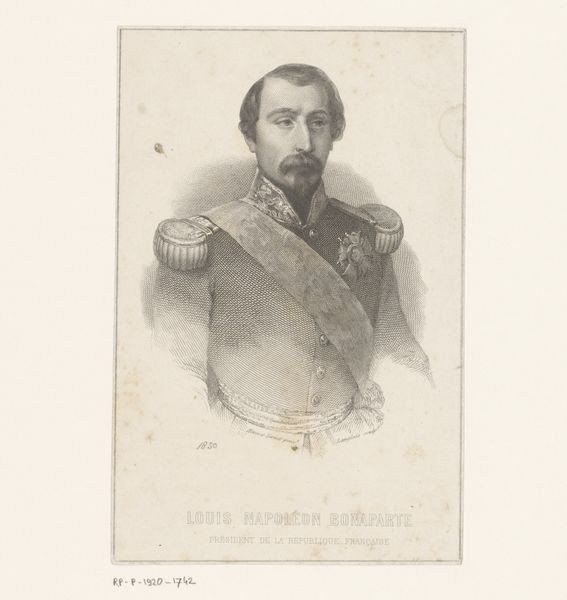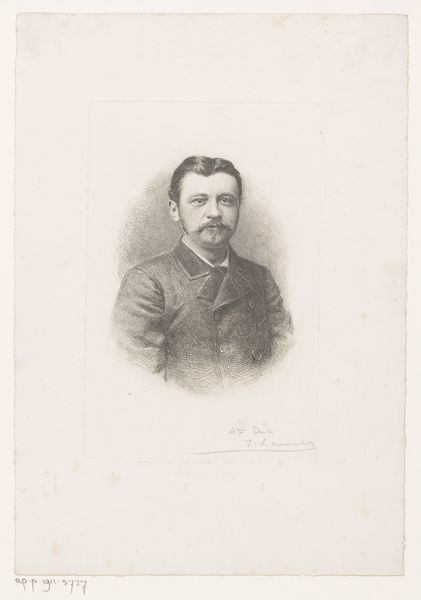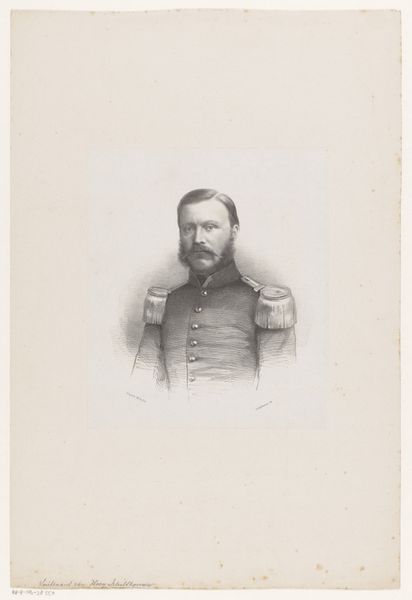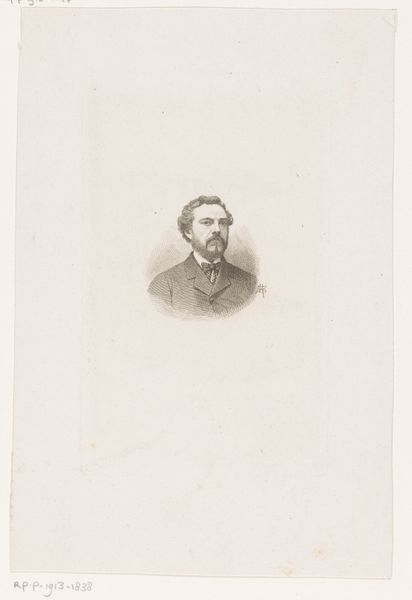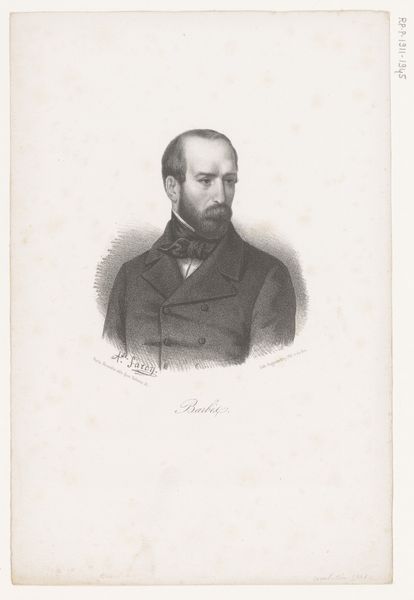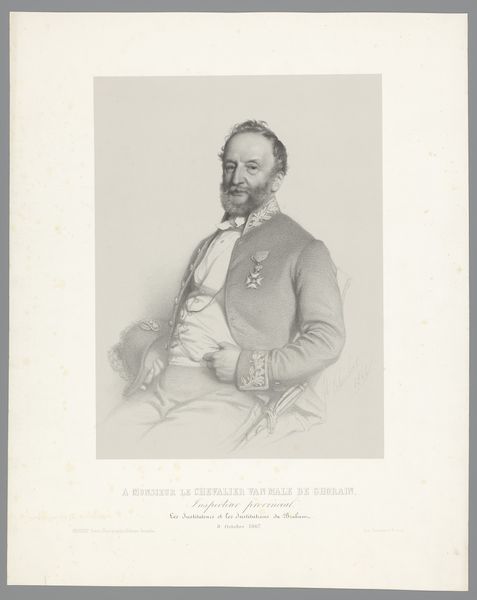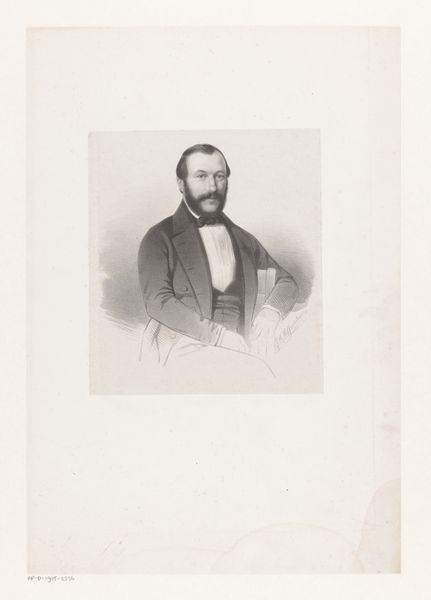
drawing, graphite
#
portrait
#
drawing
#
neoclacissism
#
graphite
Dimensions: height 264 mm, width 171 mm
Copyright: Rijks Museum: Open Domain
Curator: Welcome. Here we have Charles Baugniet's 1841 portrait of Louis Gallait, held here at the Rijksmuseum. It's rendered meticulously in graphite, offering us a striking glimpse into the man's likeness. Editor: Graphite, right. The sheen almost mimics the feel of lithography, like an image mass produced—even though you can see it’s painstakingly rendered by hand. But there’s an austerity to the lines, to the tonal shifts, even if his gaze meets mine quite directly. What do you make of that? Curator: I think the direct gaze, and even the sharp detail afforded by graphite, speaks to a desire to capture and immortalize Gallait. It’s a study in Neoclassical ideals. Notice how the precise details emphasize the subject’s intelligence and seriousness—qualities of an important academic, perhaps? Editor: Yes, I do, and I think the choice of graphite is brilliant in that it underscores class assumptions of art making, while still allowing Baugniet a means for exacting precision. Like a machine made thing that carries all the touch of the hand, if that makes sense. Look how that grey gives this Gallait, this Belgian historical painter, an aura of respectable dignity—almost blurring those distinctions of labor and purpose. Curator: Indeed. Look closer at his clothing and subtle emblems. There's a sense of civic pride embedded in the detail, reflecting values Gallait likely upheld. The buttoned jacket and precisely knotted cravat communicate restraint and order, key social symbols of that era, of course. Editor: It makes you wonder, doesn't it? About the labor. This portrait, a lithographer might say is made in the shadow of reproductive methods, with careful craftsmanship shaping it—and what it reflects in turn: those modes of artistic consumption for nineteenth-century viewers, and what that all meant for Gallait’s status as an artist and even more broadly…how he'd use this tool, this means of his portrait’s reproduction. Curator: Fascinating, yes. Ultimately, I see a desire to represent deeper universal ideals about human accomplishment and the relationship to status... even perhaps, ambition and history! Editor: Right. Even as it captures Gallait the artist and subject, his essence. In this image of labor and fine detail. A lot like history painting if you will. A means of reproducing class, really. Curator: Well put. Hopefully our reflections here illuminated new ways of perceiving not only Gallait but Baugniet too!
Comments
No comments
Be the first to comment and join the conversation on the ultimate creative platform.

